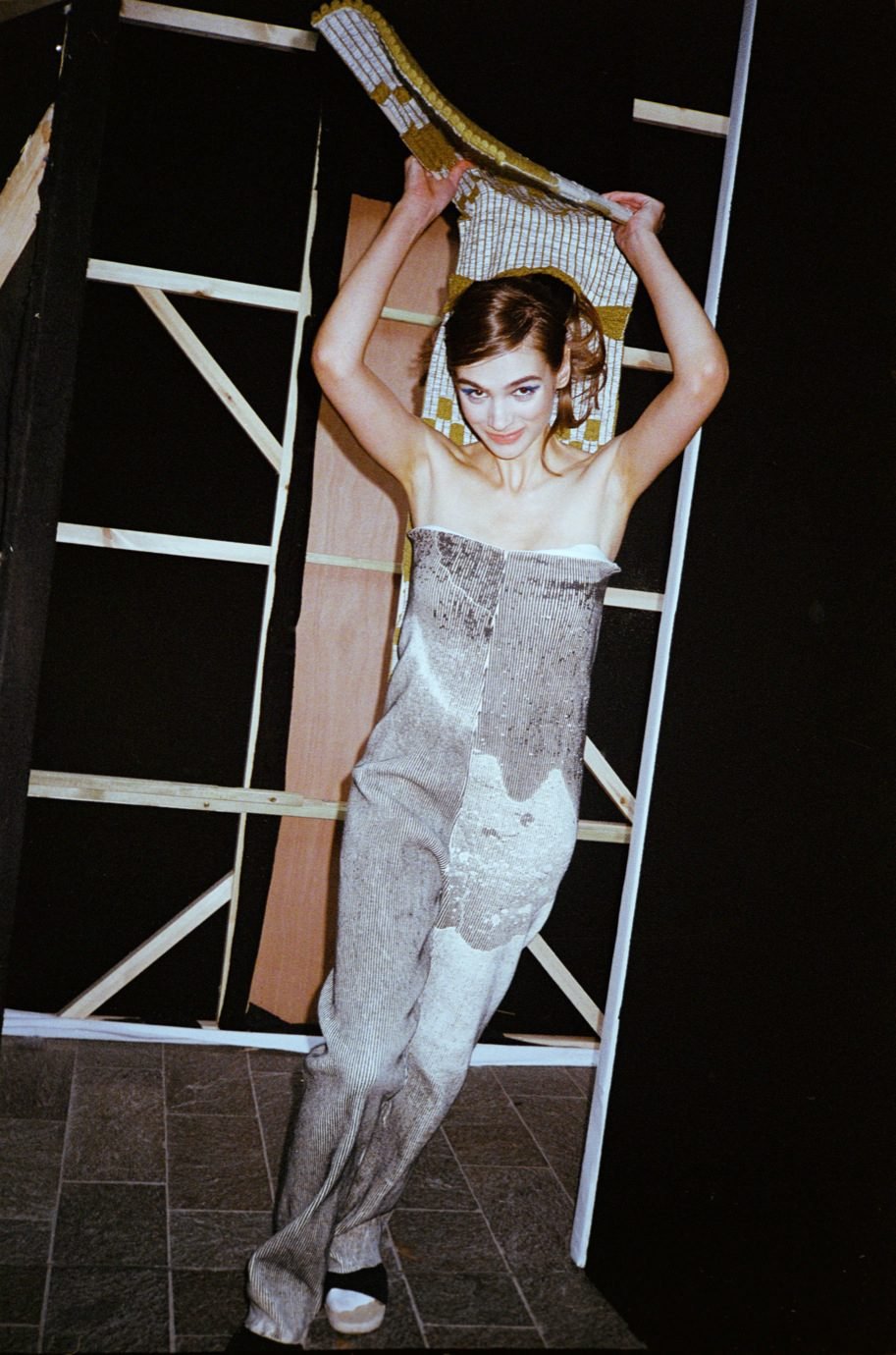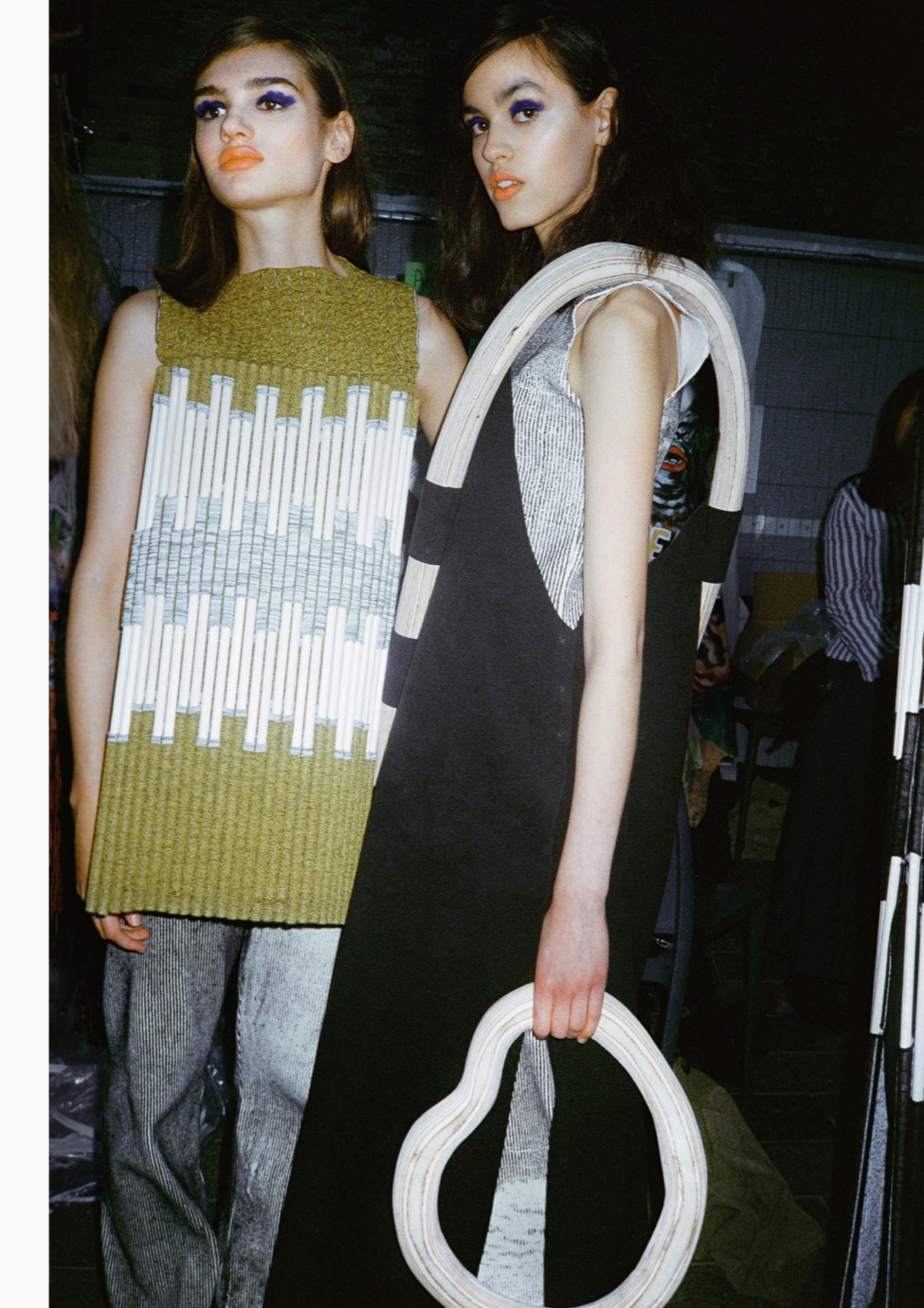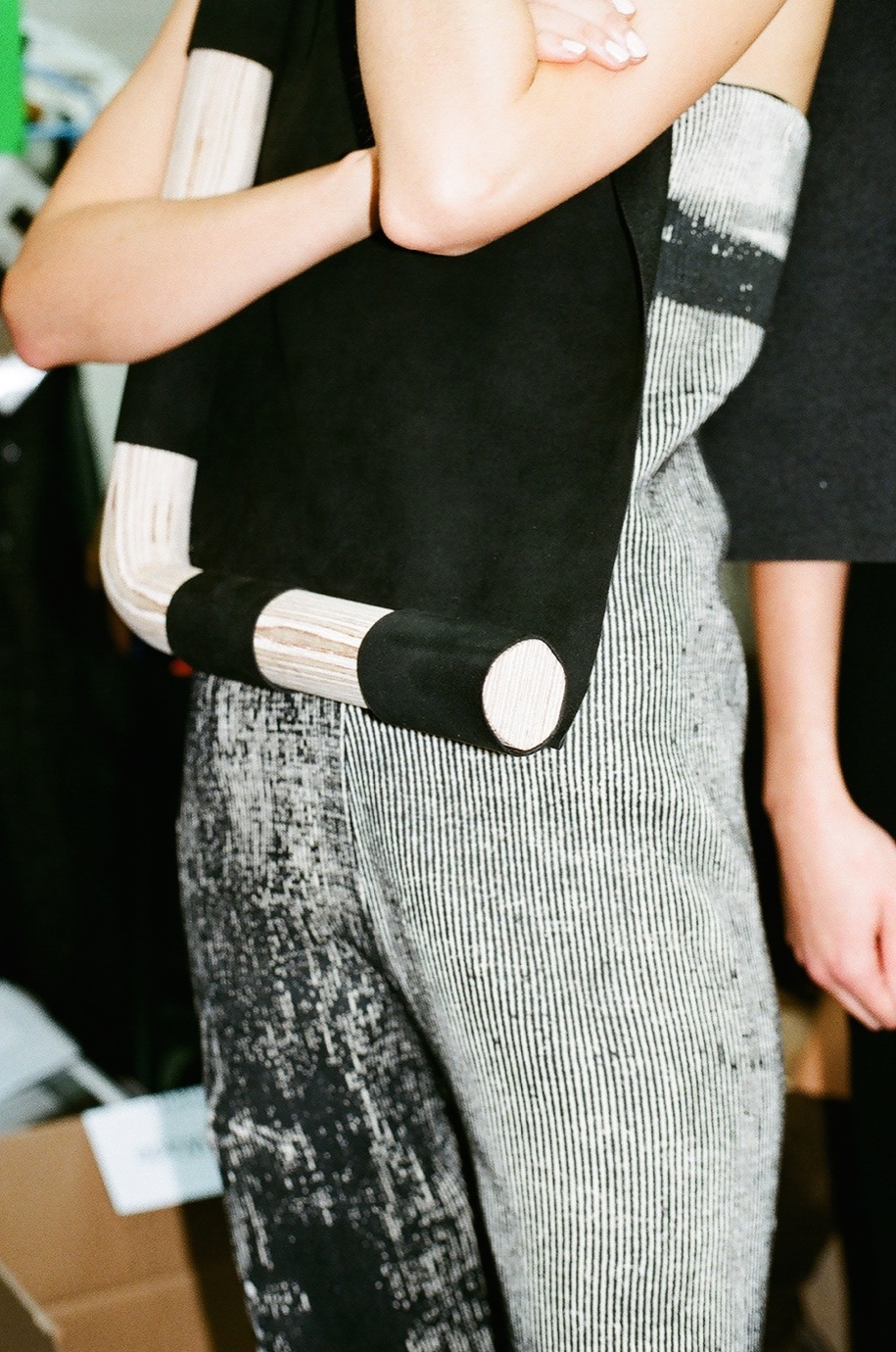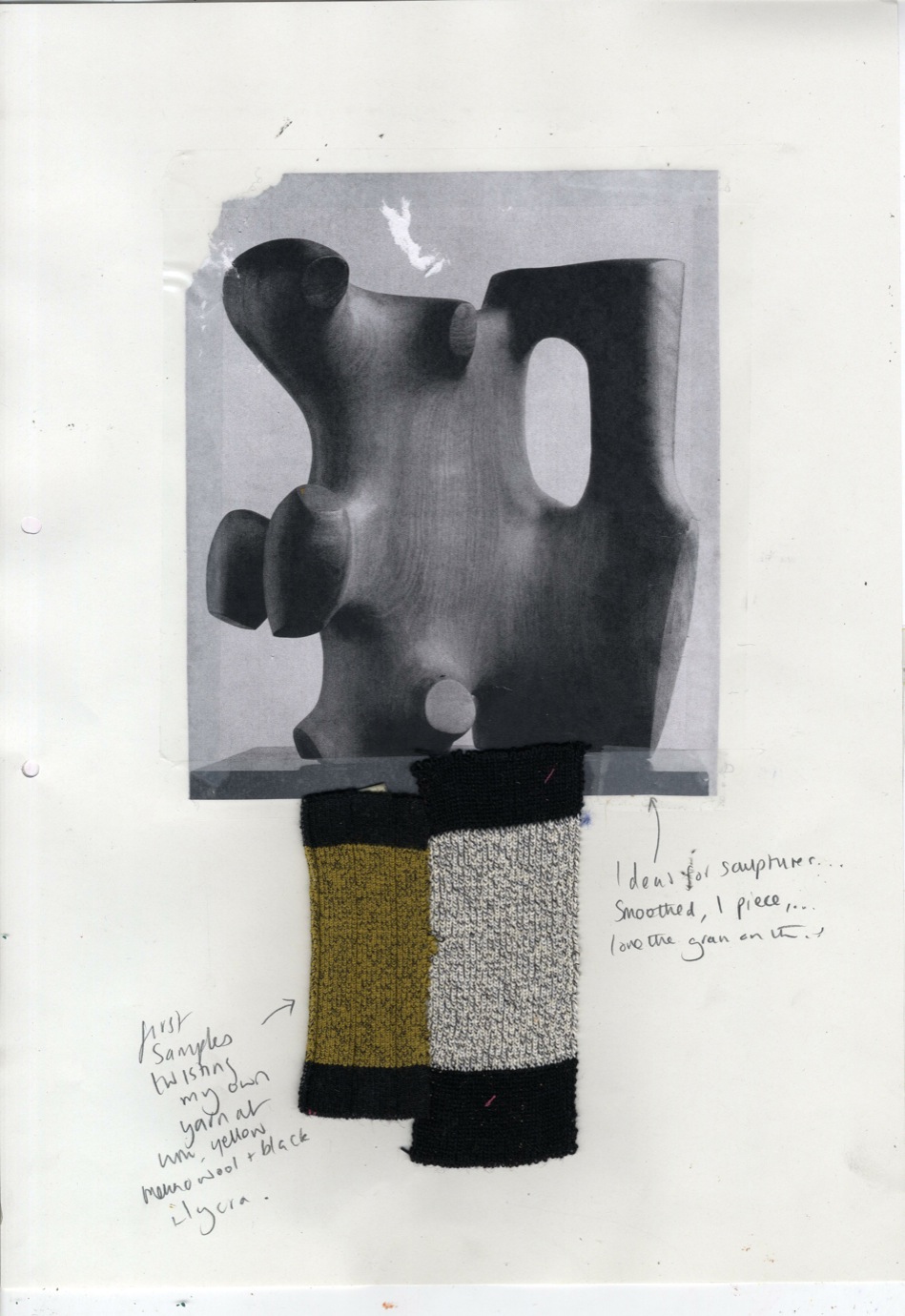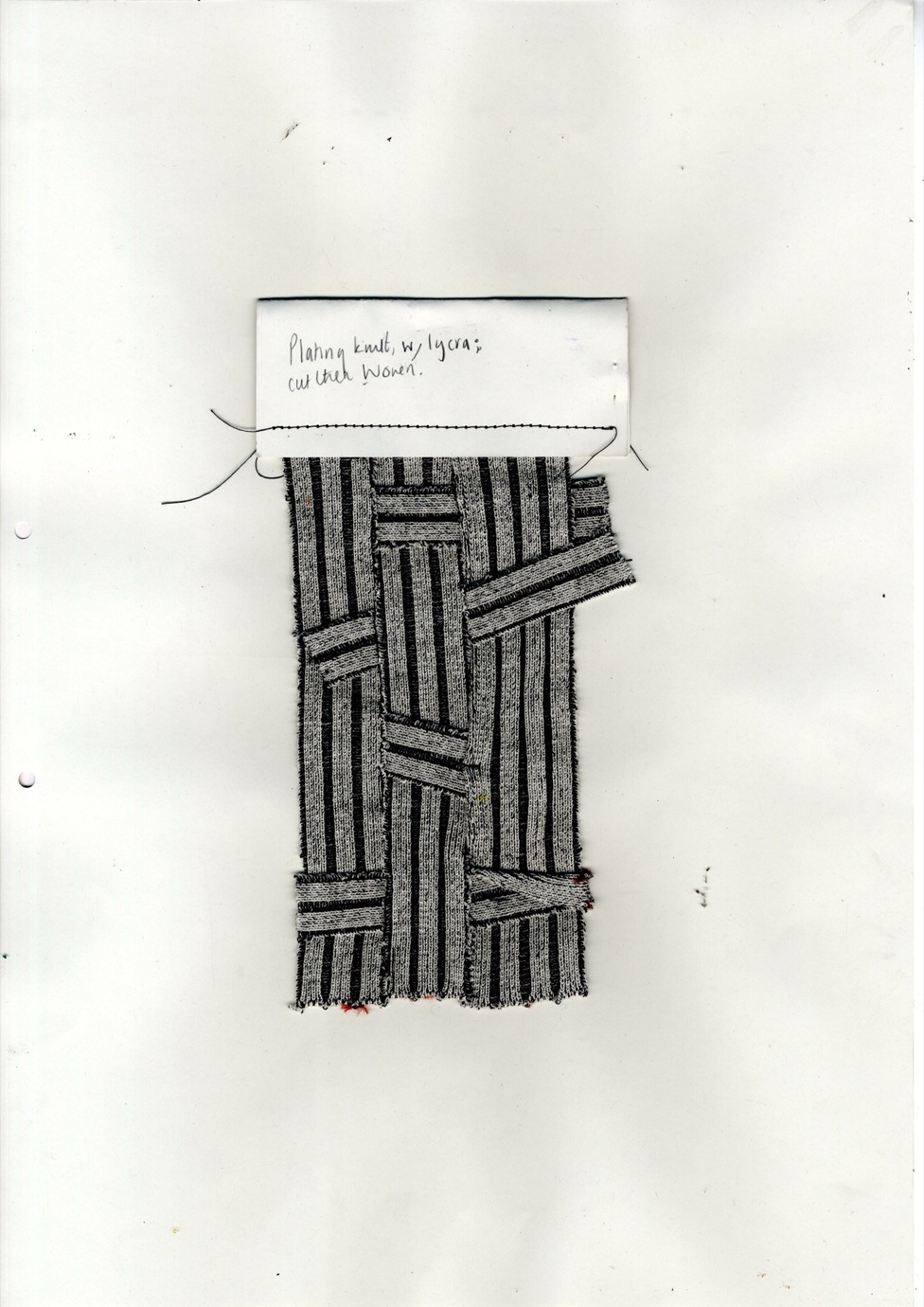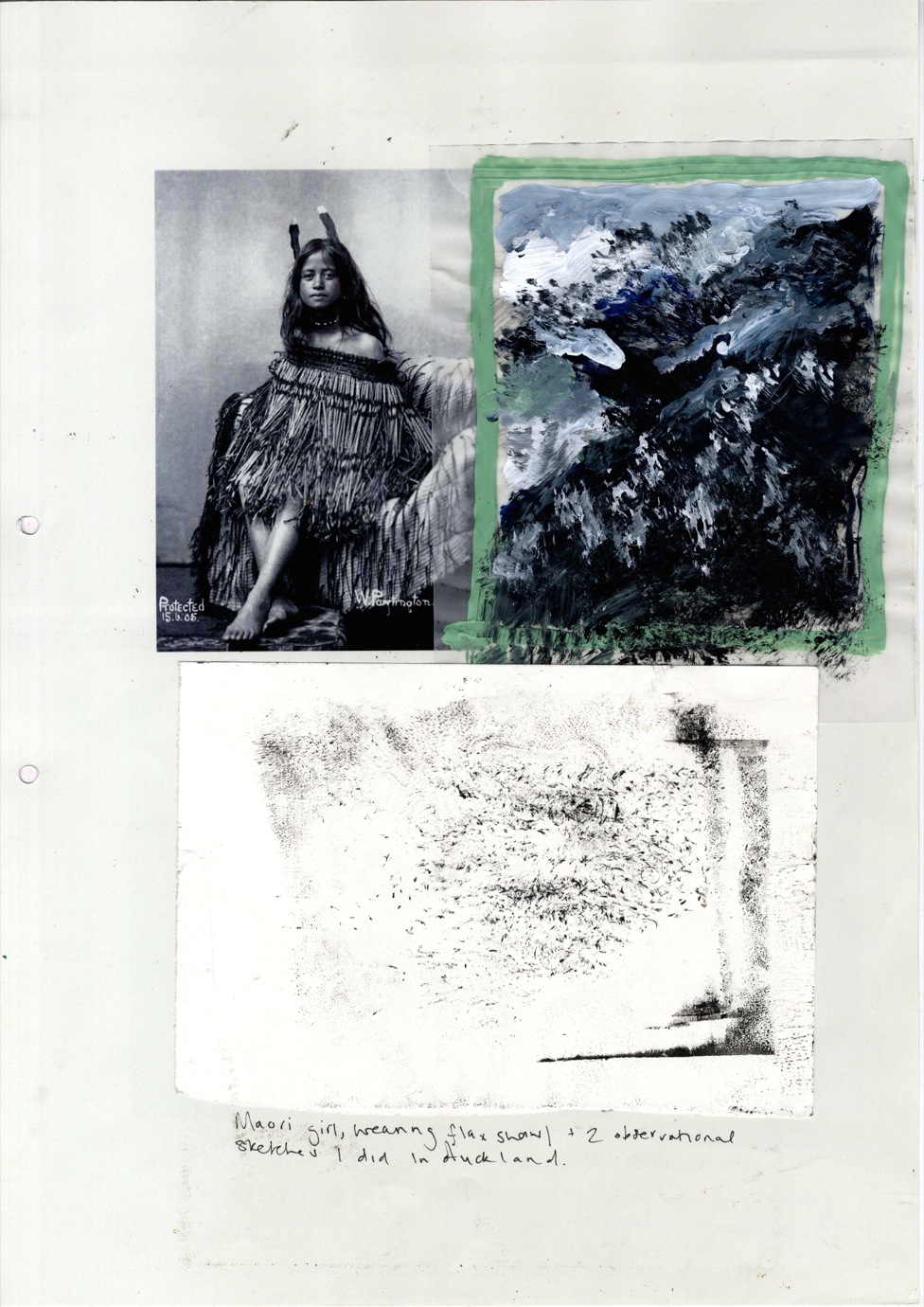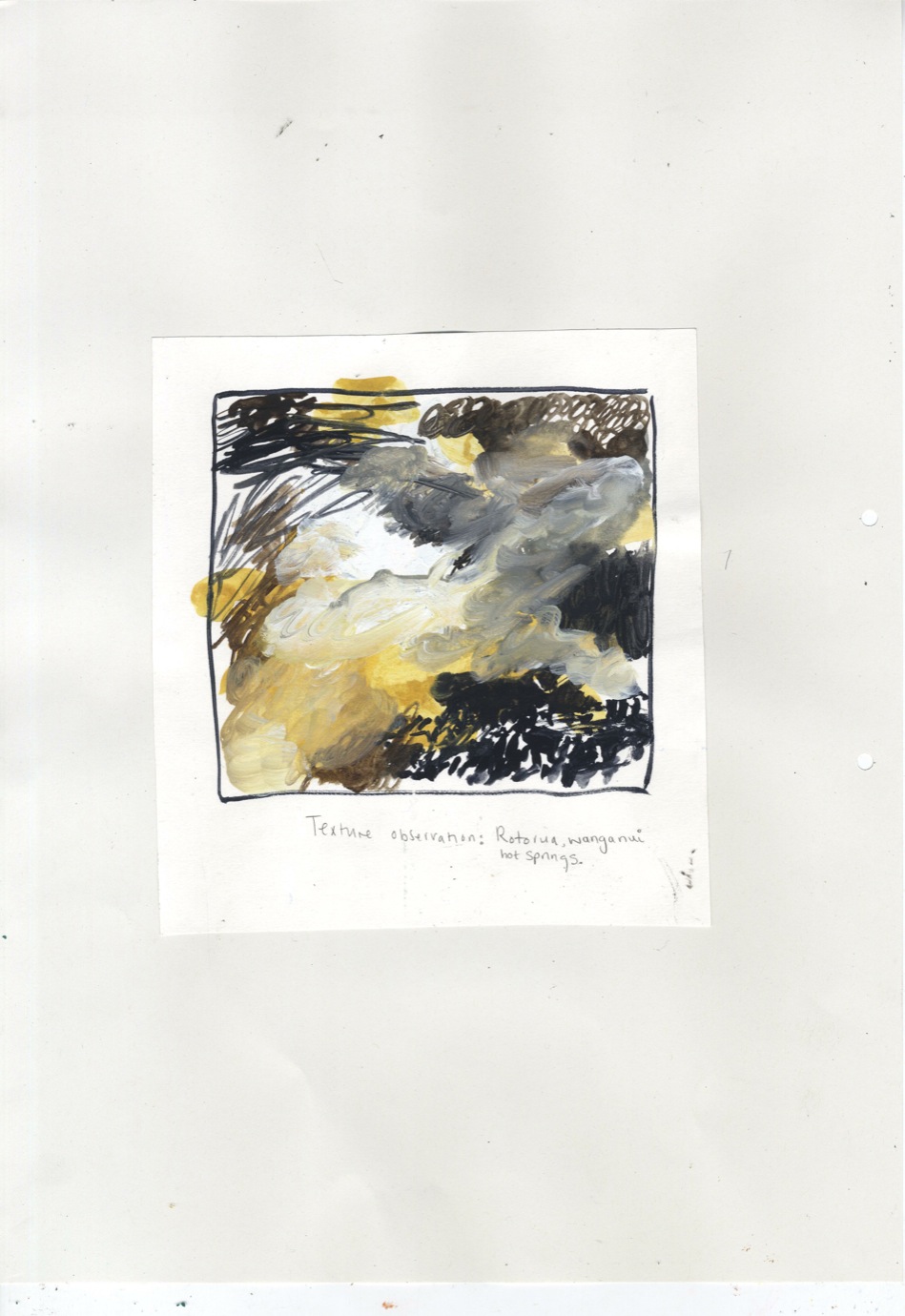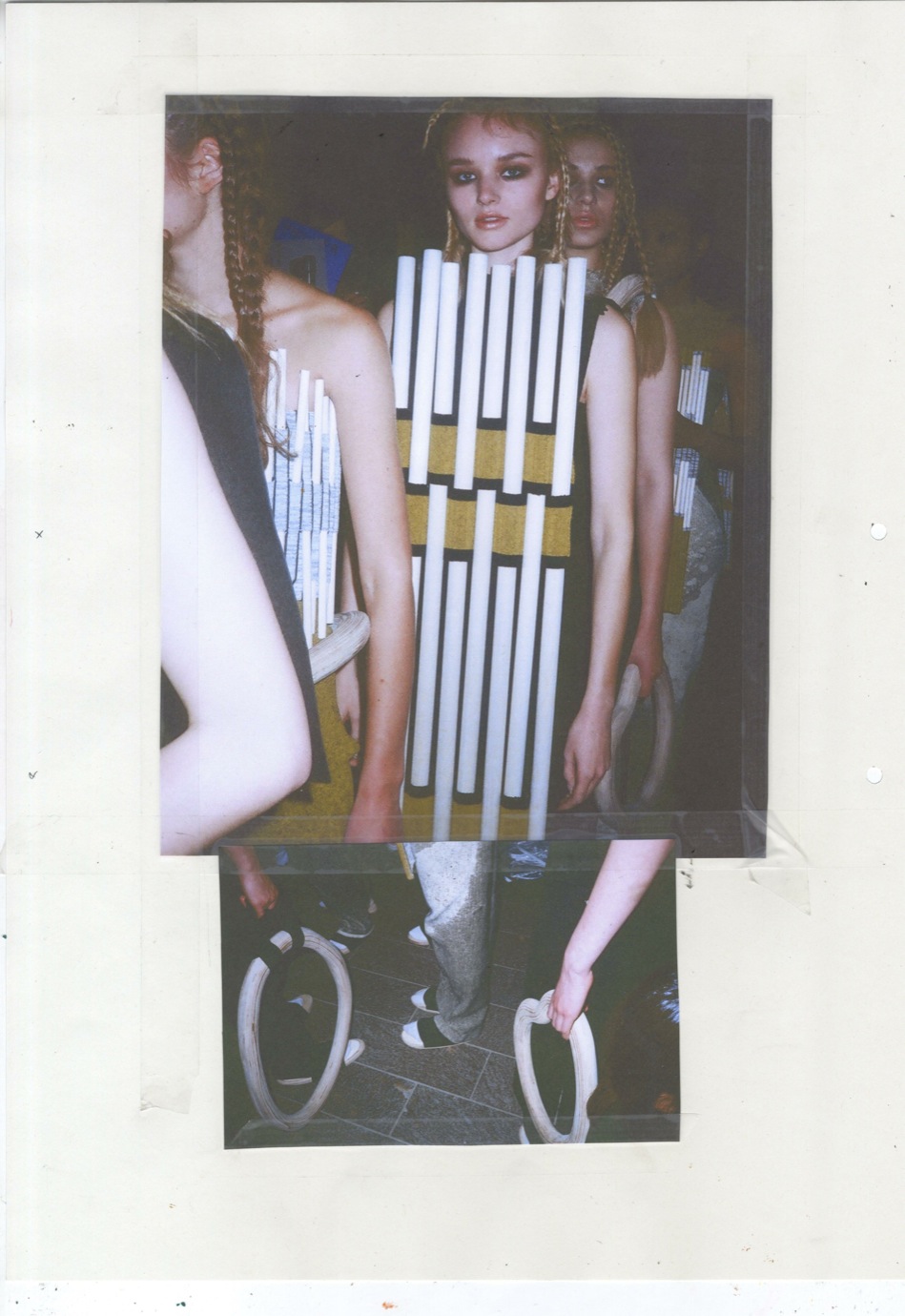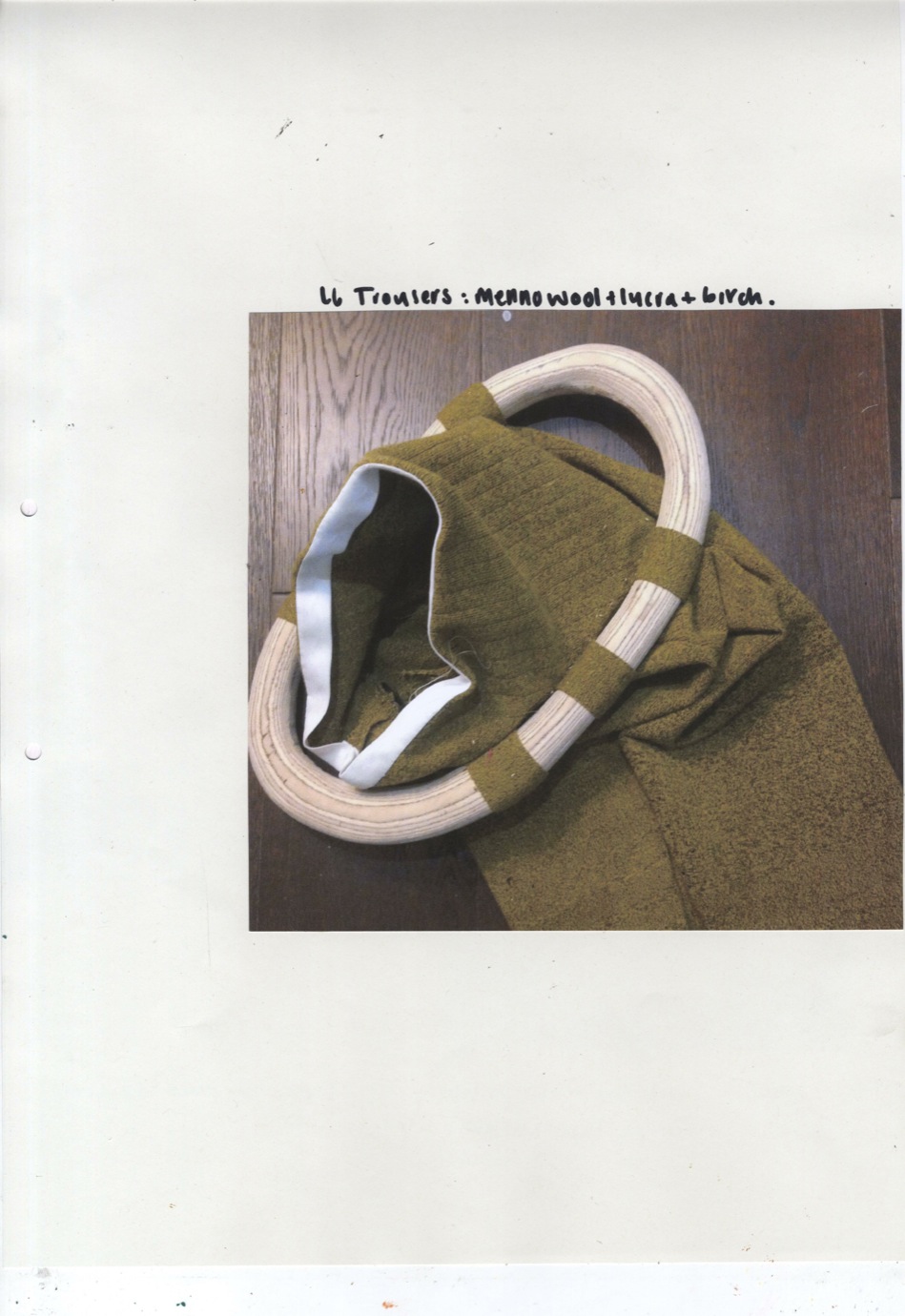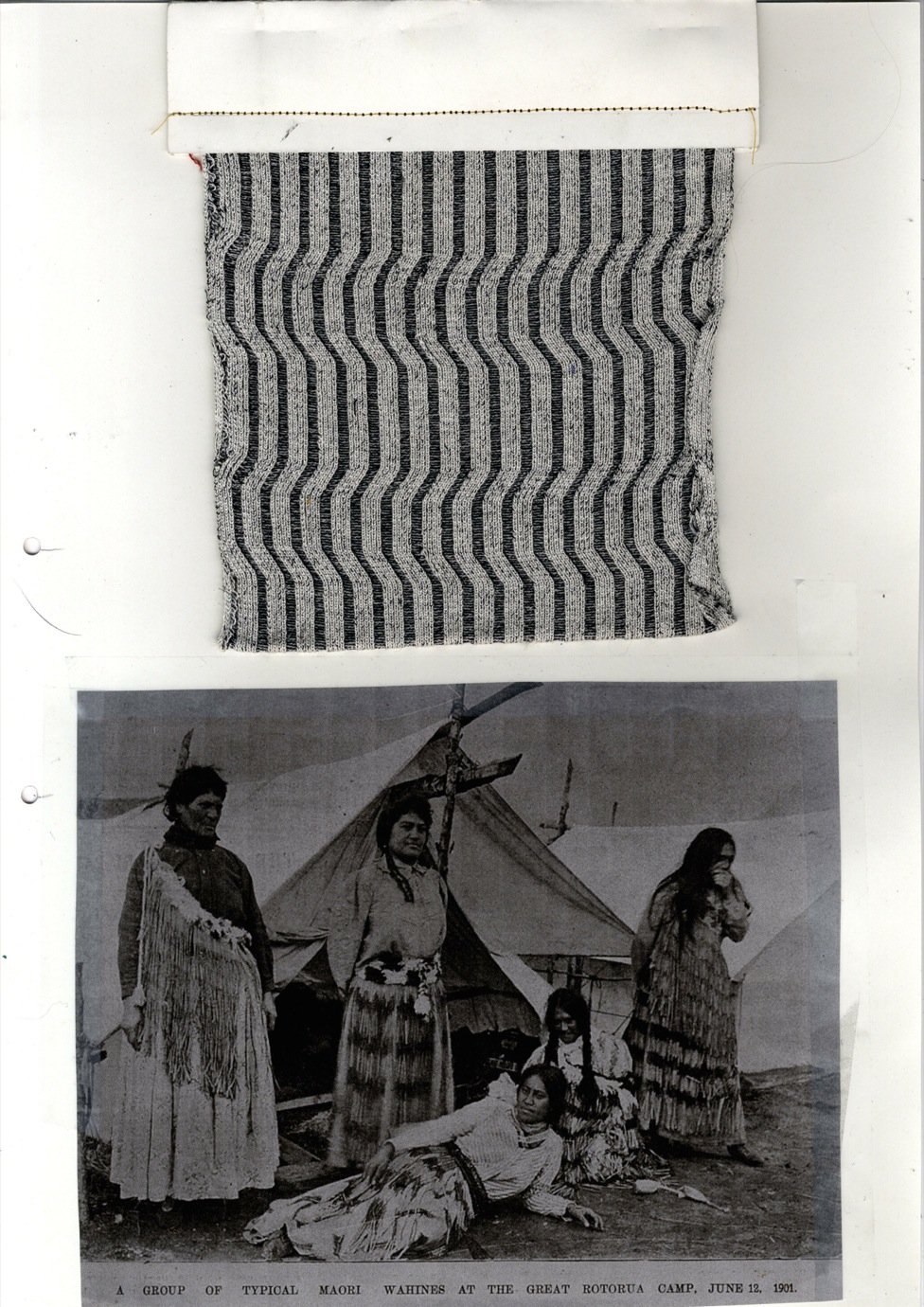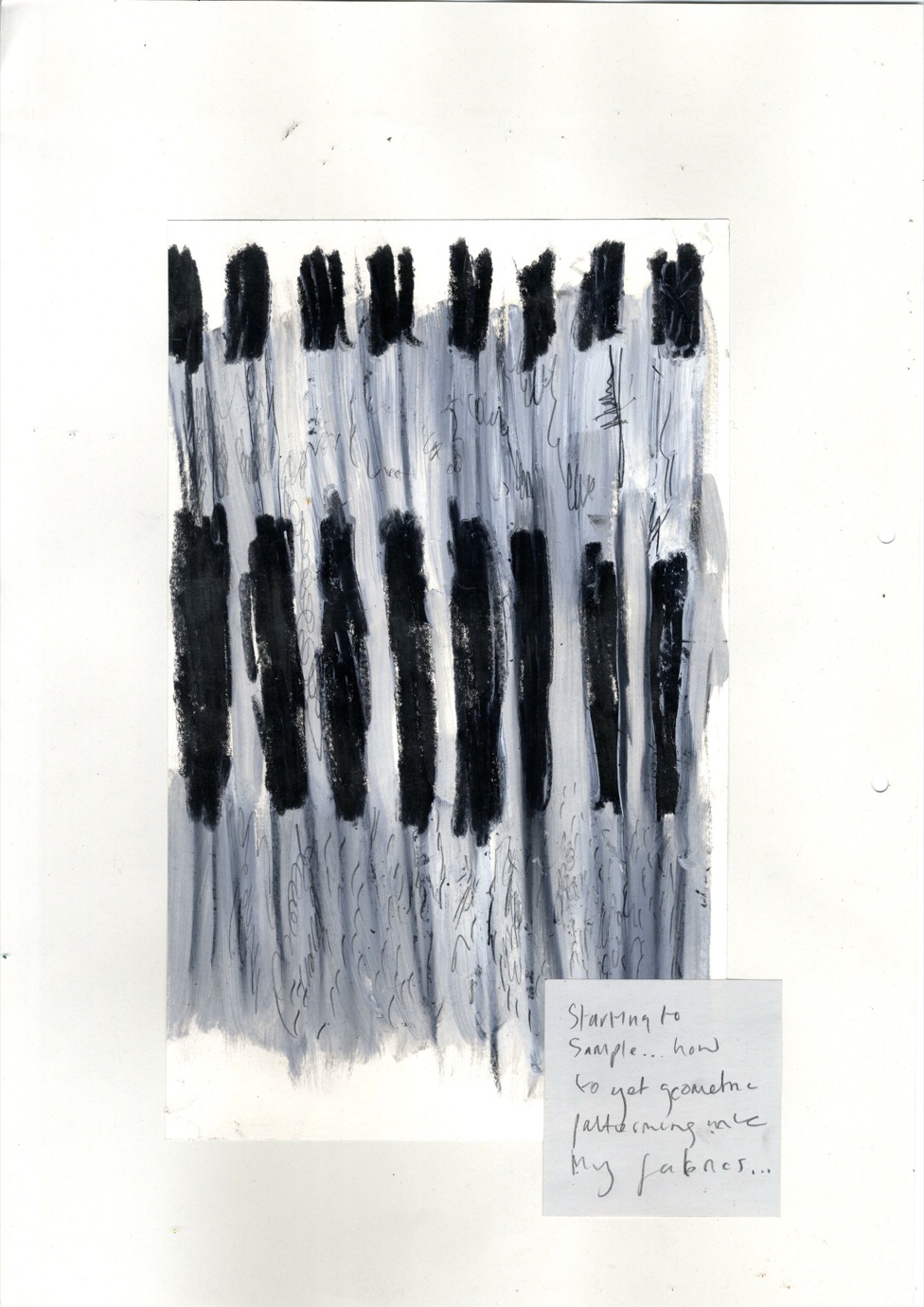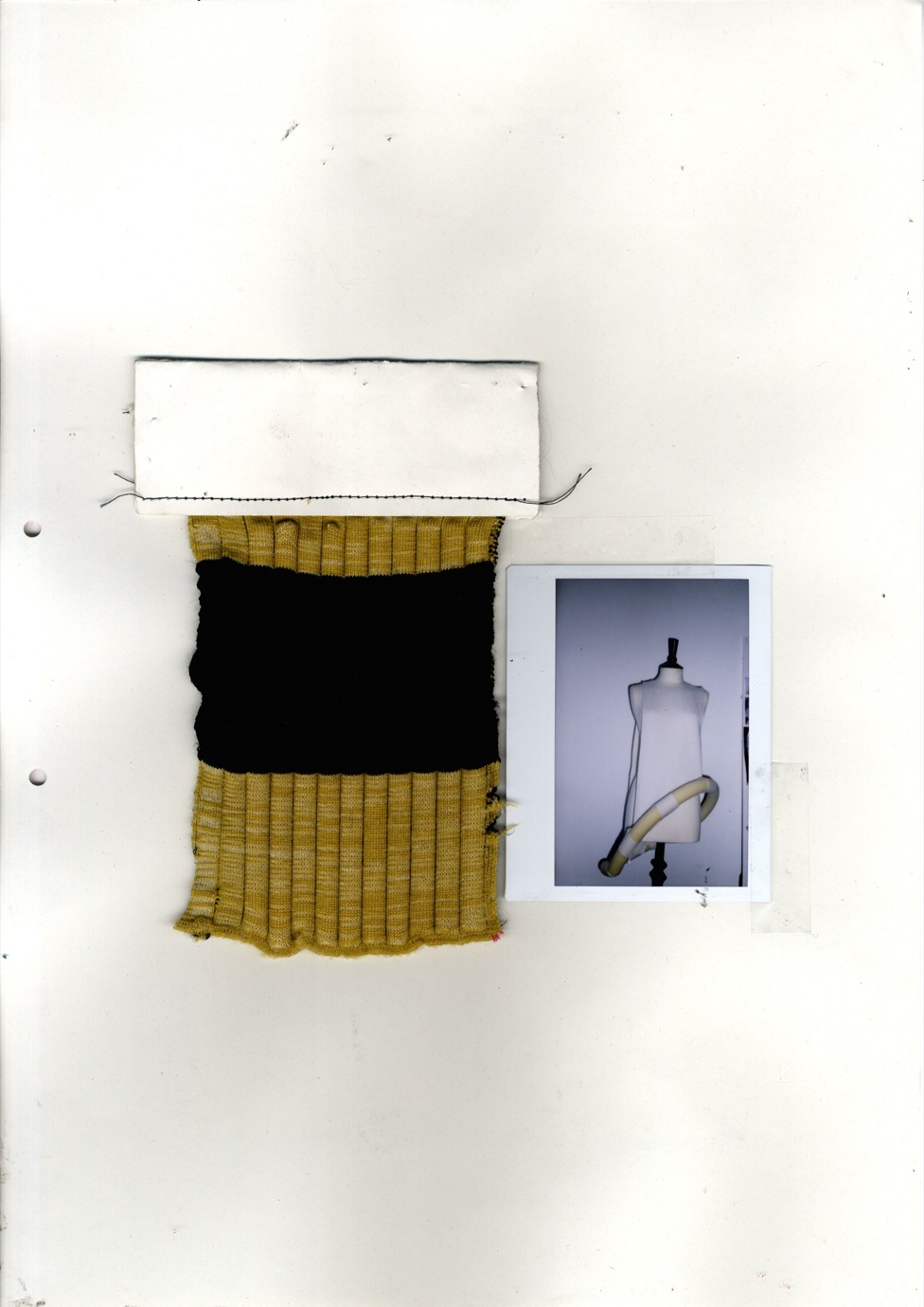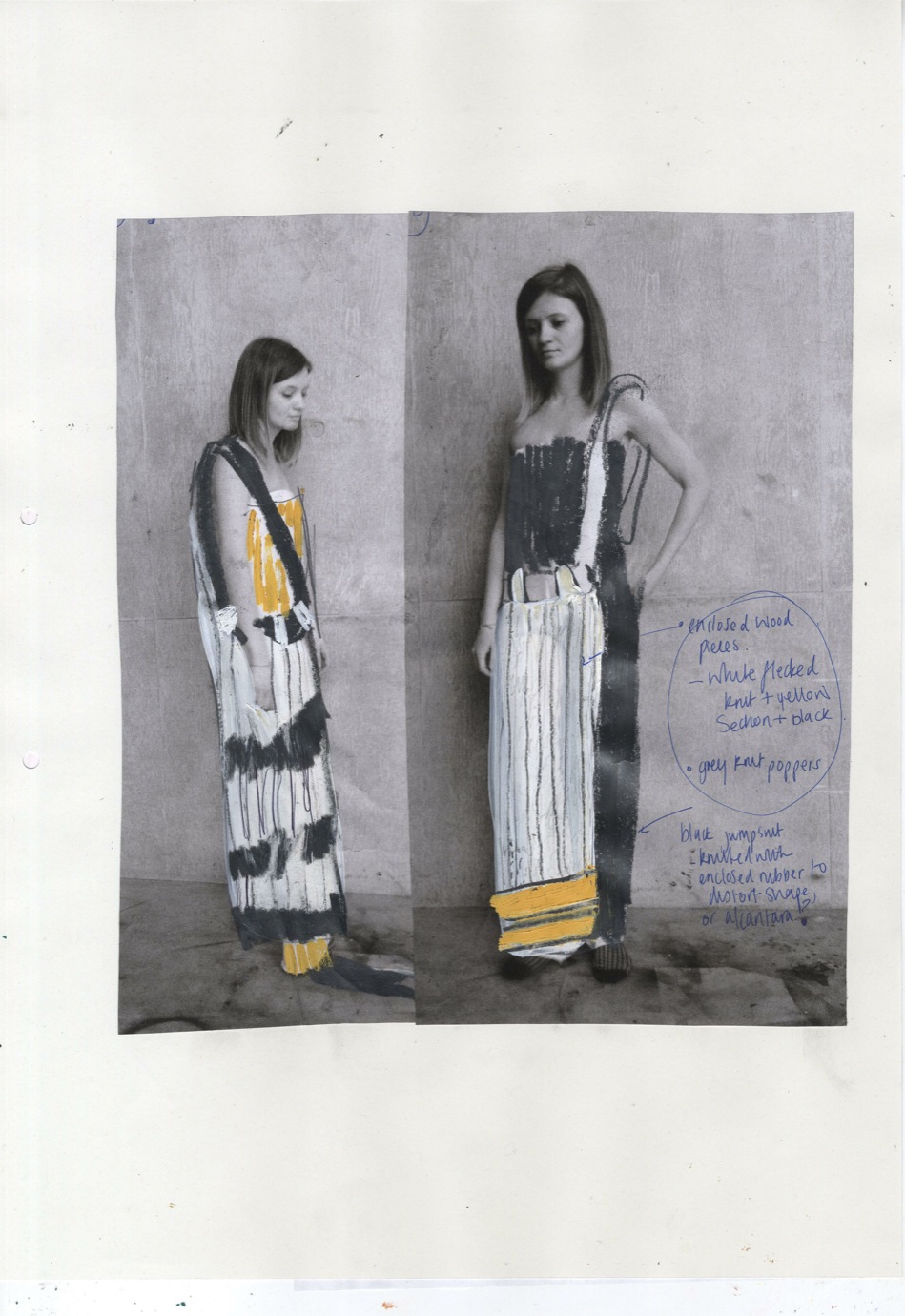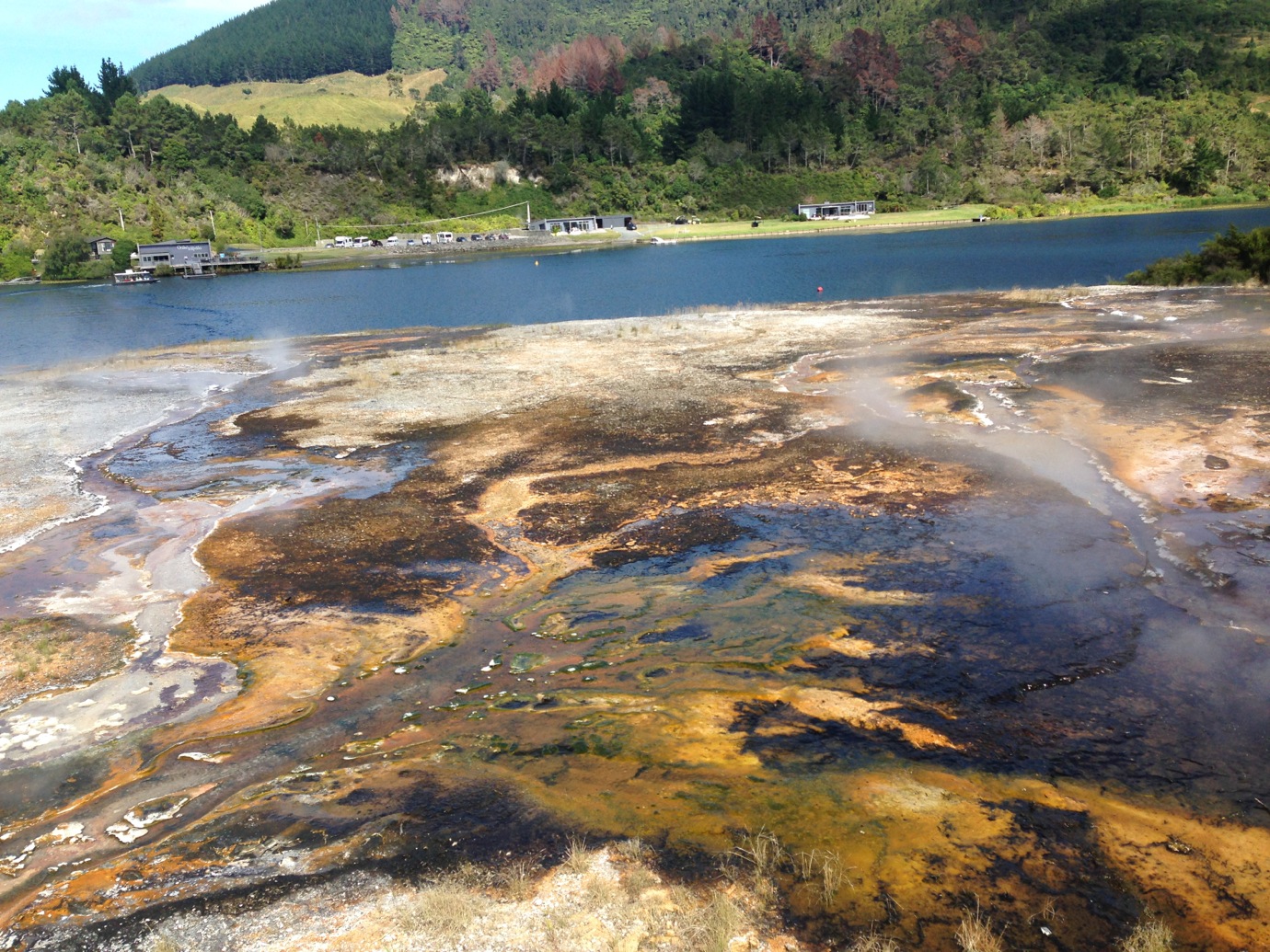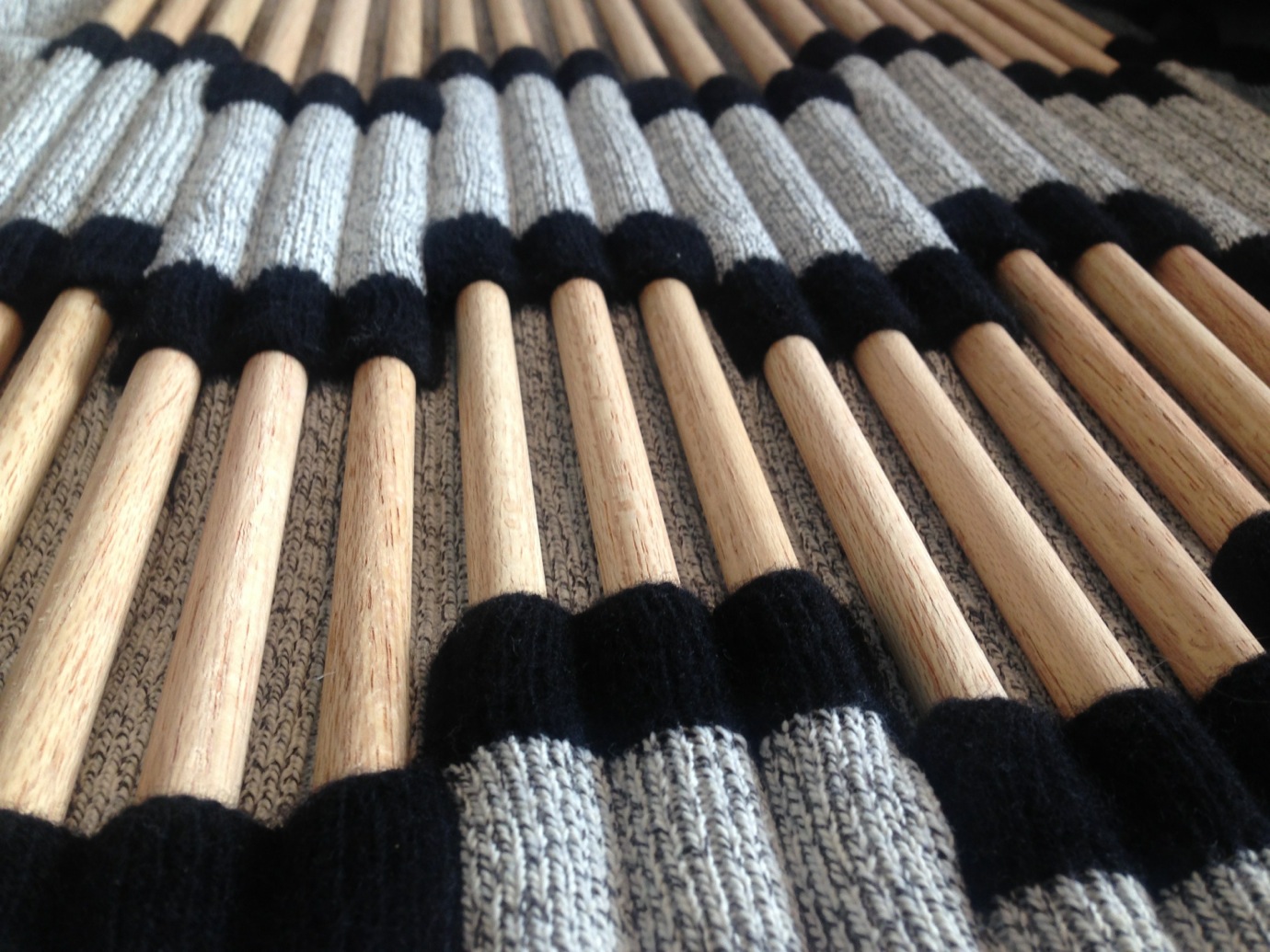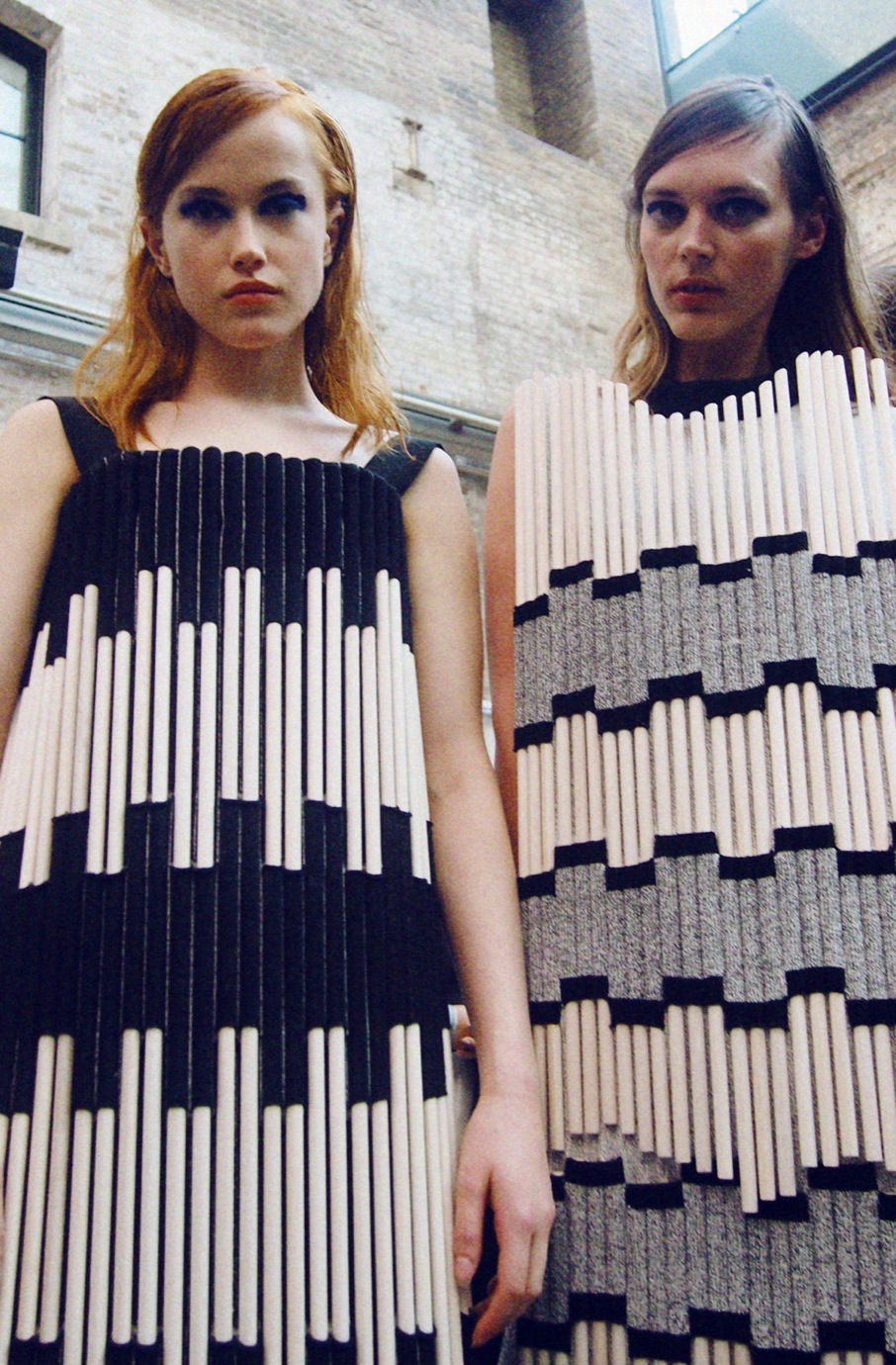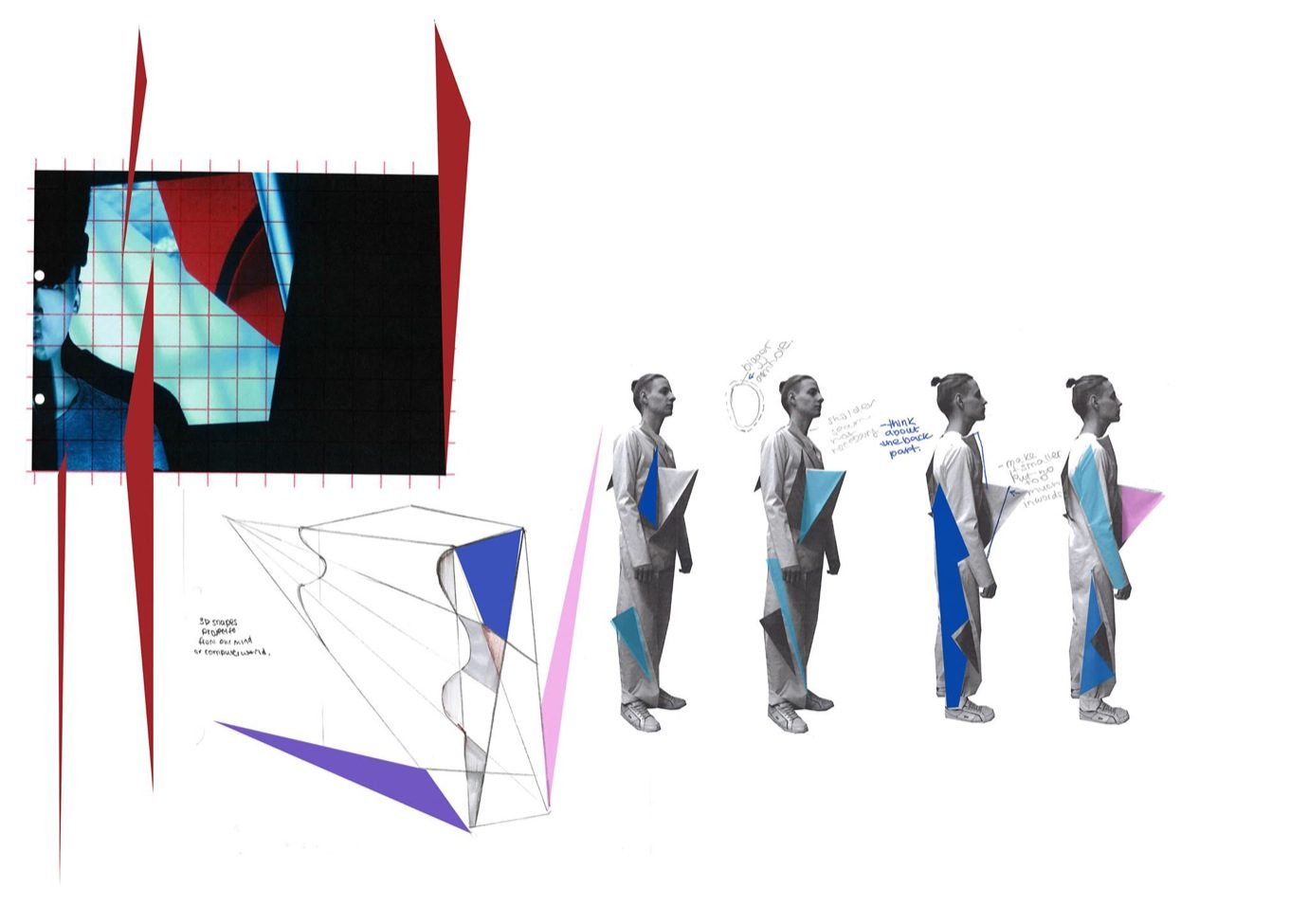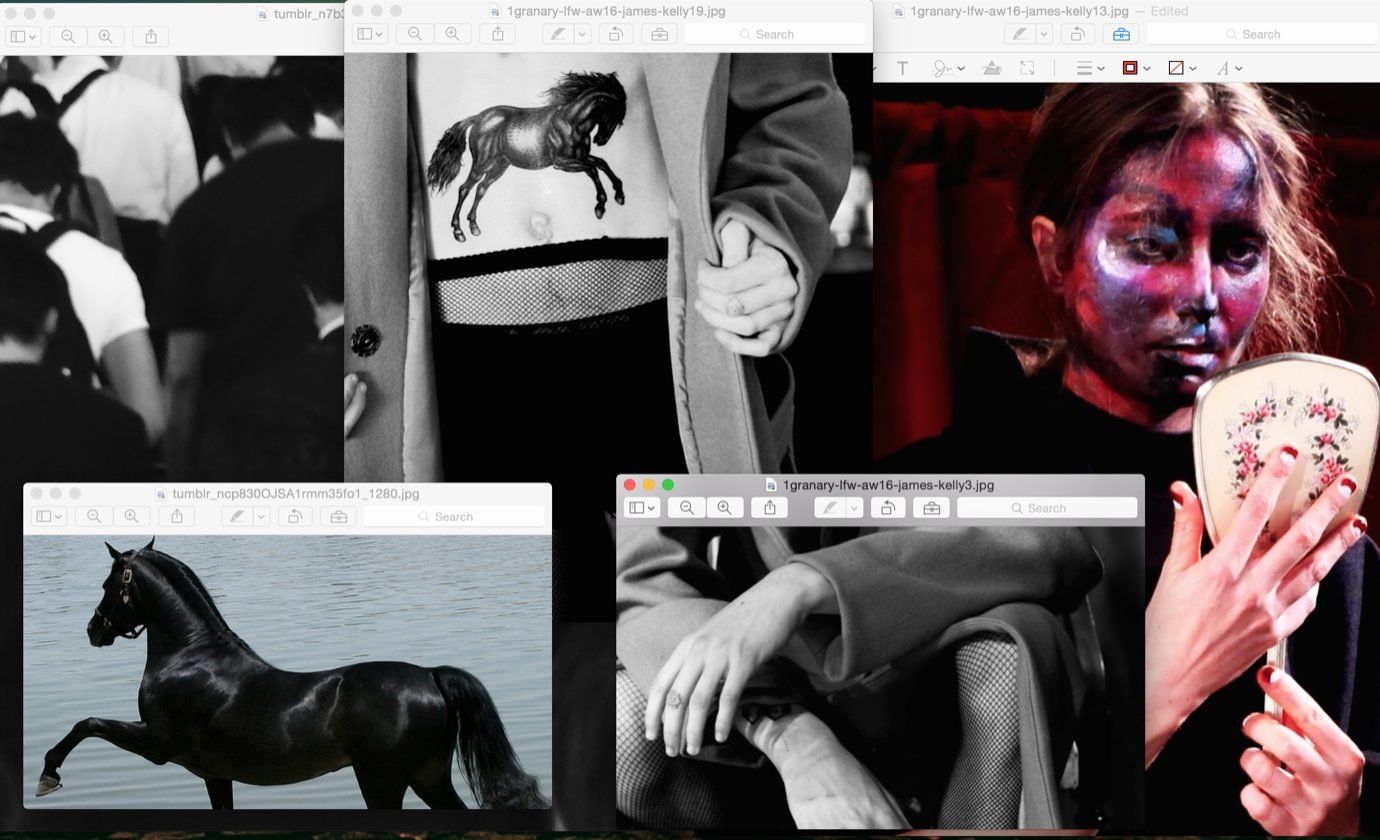“IN A WAY, NOT KNOWING ALL THE TECHNIQUES MAKES YOUR OUTCOMES MORE CREATIVE AND ORIGINAL.”
It was one attentive tutor at Chelsea’s Foundation in Art and Design course that pushed Laura, originally from York, in a fashion direction. With her keen interest in drawing and painting, she was convinced she would pursue a degree in Fine Art. “My tutor at Chelsea encouraged me to apply for the BA Knitwear at CSM, because she noticed an attention to line and texture in my drawings and thought it might be a good fit,” she says, explaining her path. “I was pretty open to suggestions at the time, so I sort of trusted her on that. As soon as I started the course, I realised that most of the stuff in fashion that catches my eye tends to be knitted or has a hand crafted element.”
The handcrafted takes a central role in Laura’s designs. Her work is remarkably sculptural, often taking the shape of full-body plates or covers, constructed in manipulated wood and knit. Having never knitted, she entered her BA course somewhat blindly. Her first year was ridden by self-doubt, as she tried to get to grips with the difficult technique. However, she eventually learned that knitwear is as conceptual as any other discipline – and that lack of skill can be used actively. “I started to realize that it’s not just about technical skill; it’s about the ideas. In a way, not knowing all the techniques makes your outcomes more creative and original. By the final year, I felt a lot more comfortable with what I was doing.”

